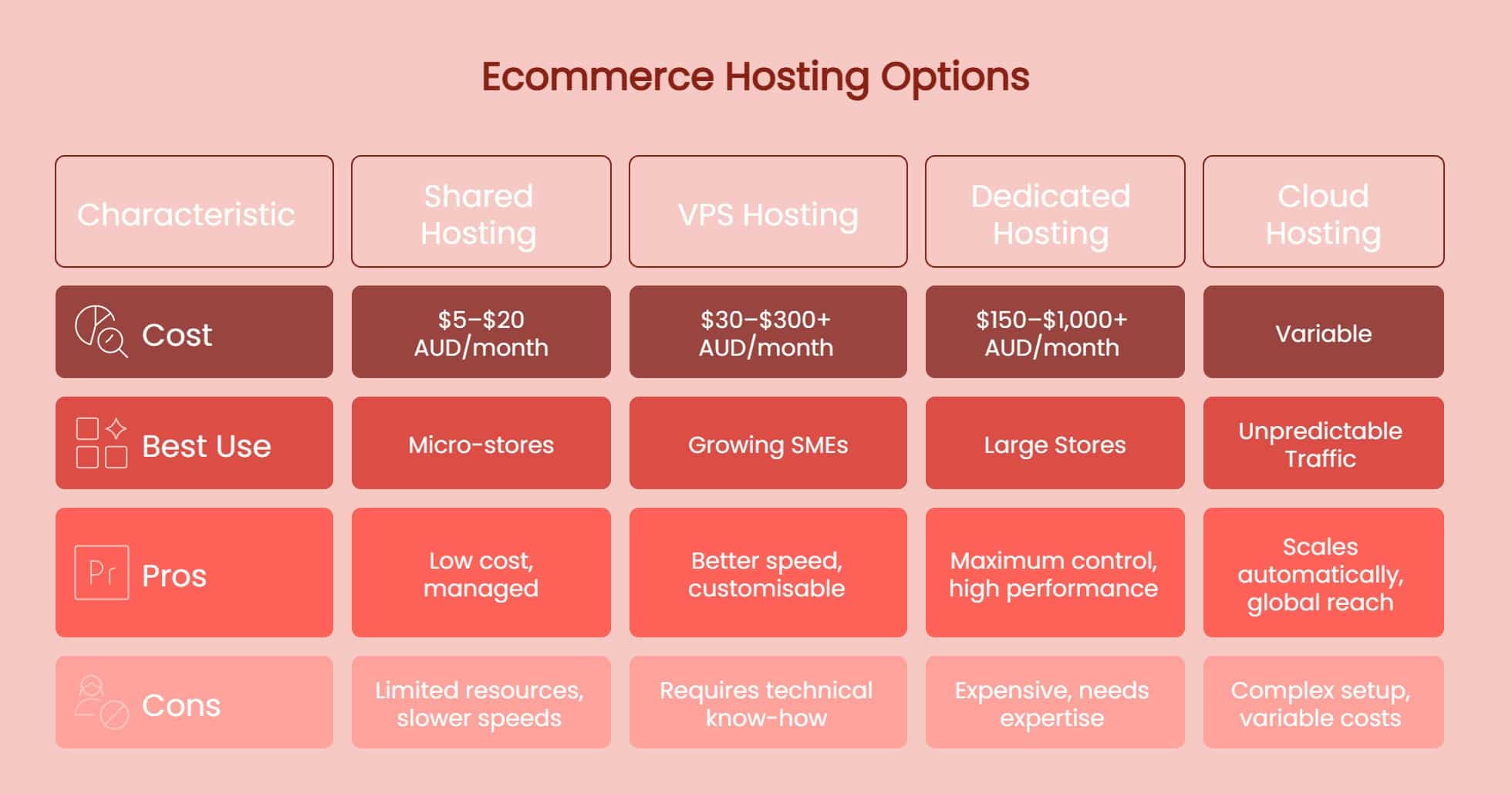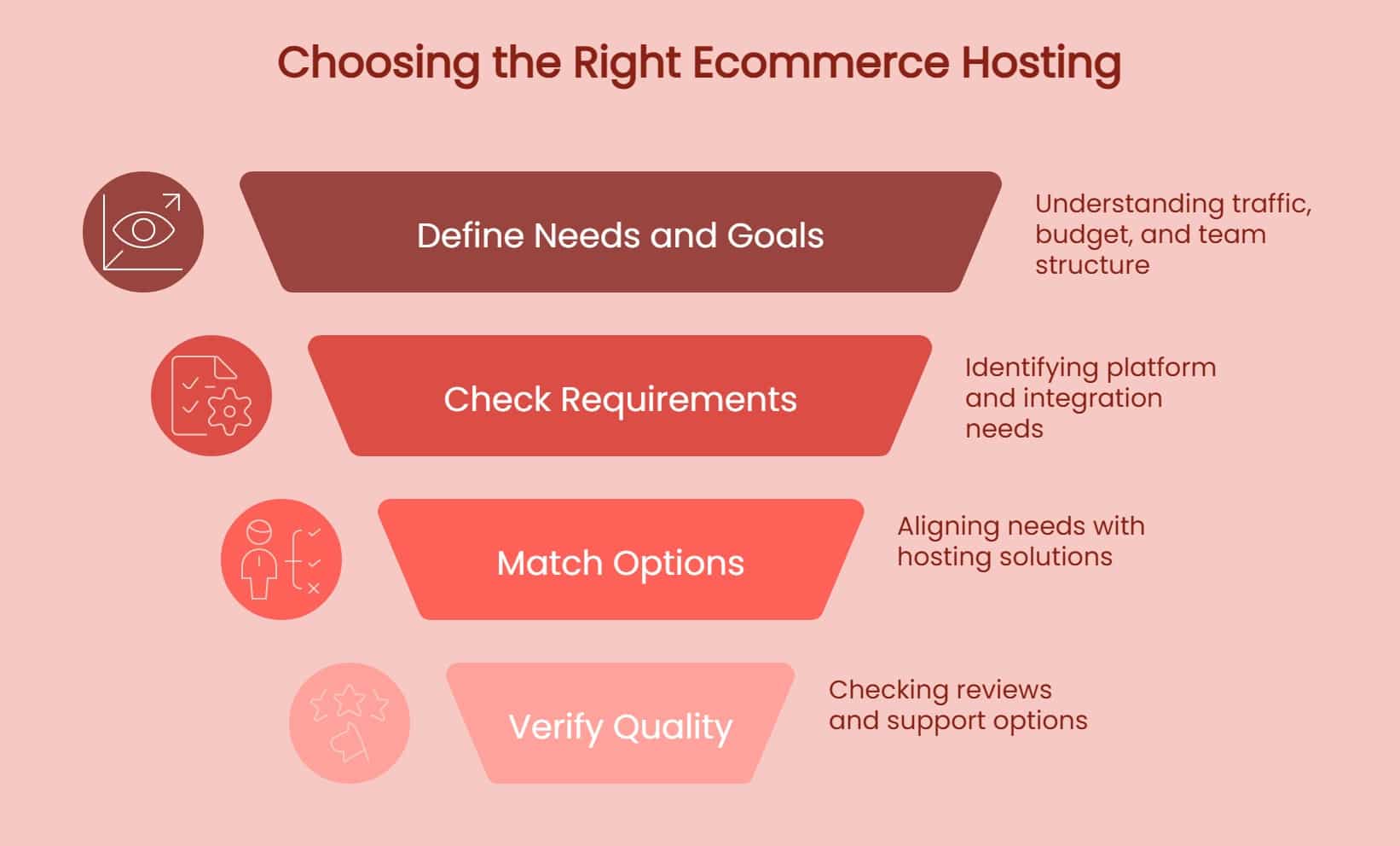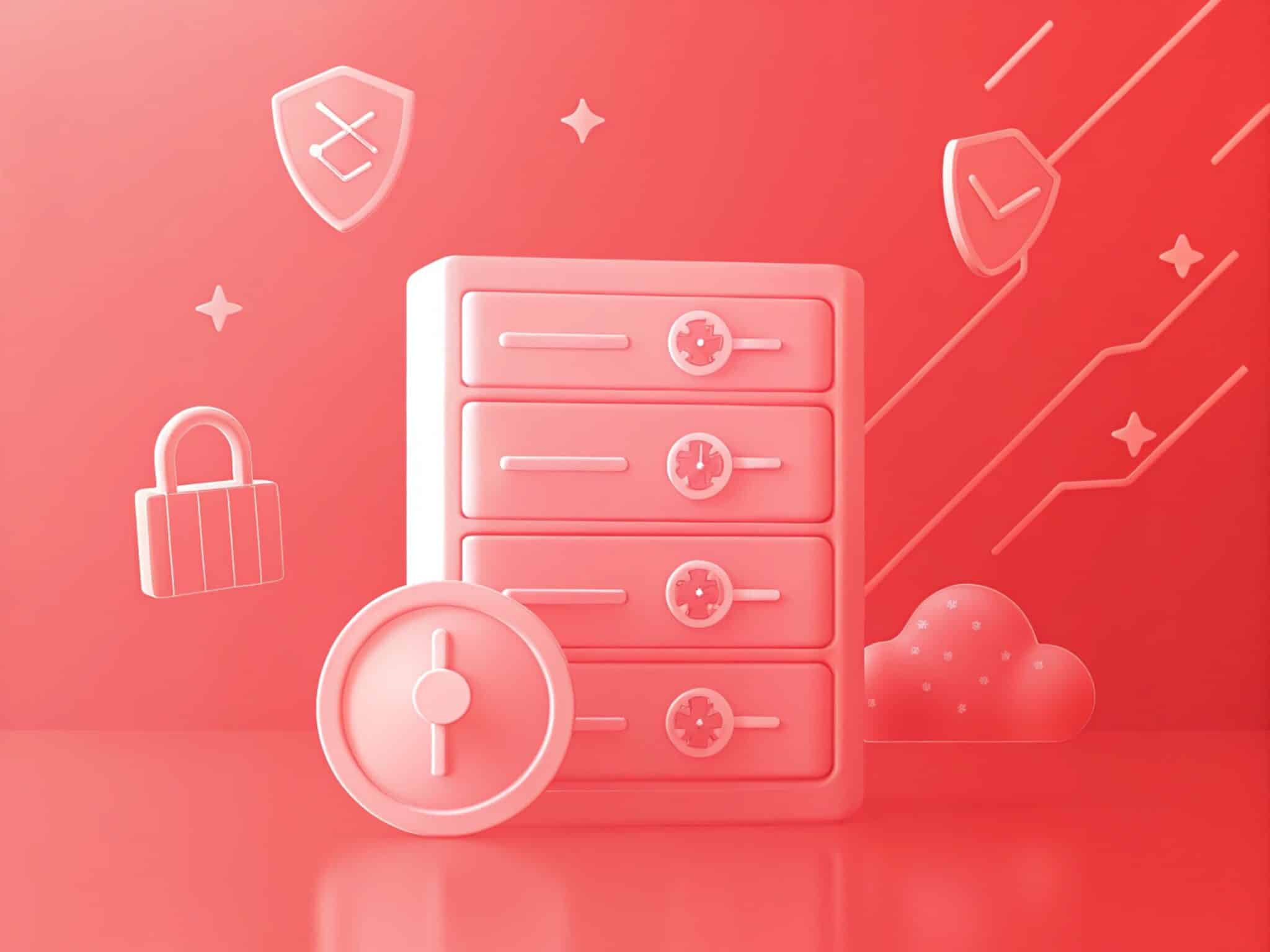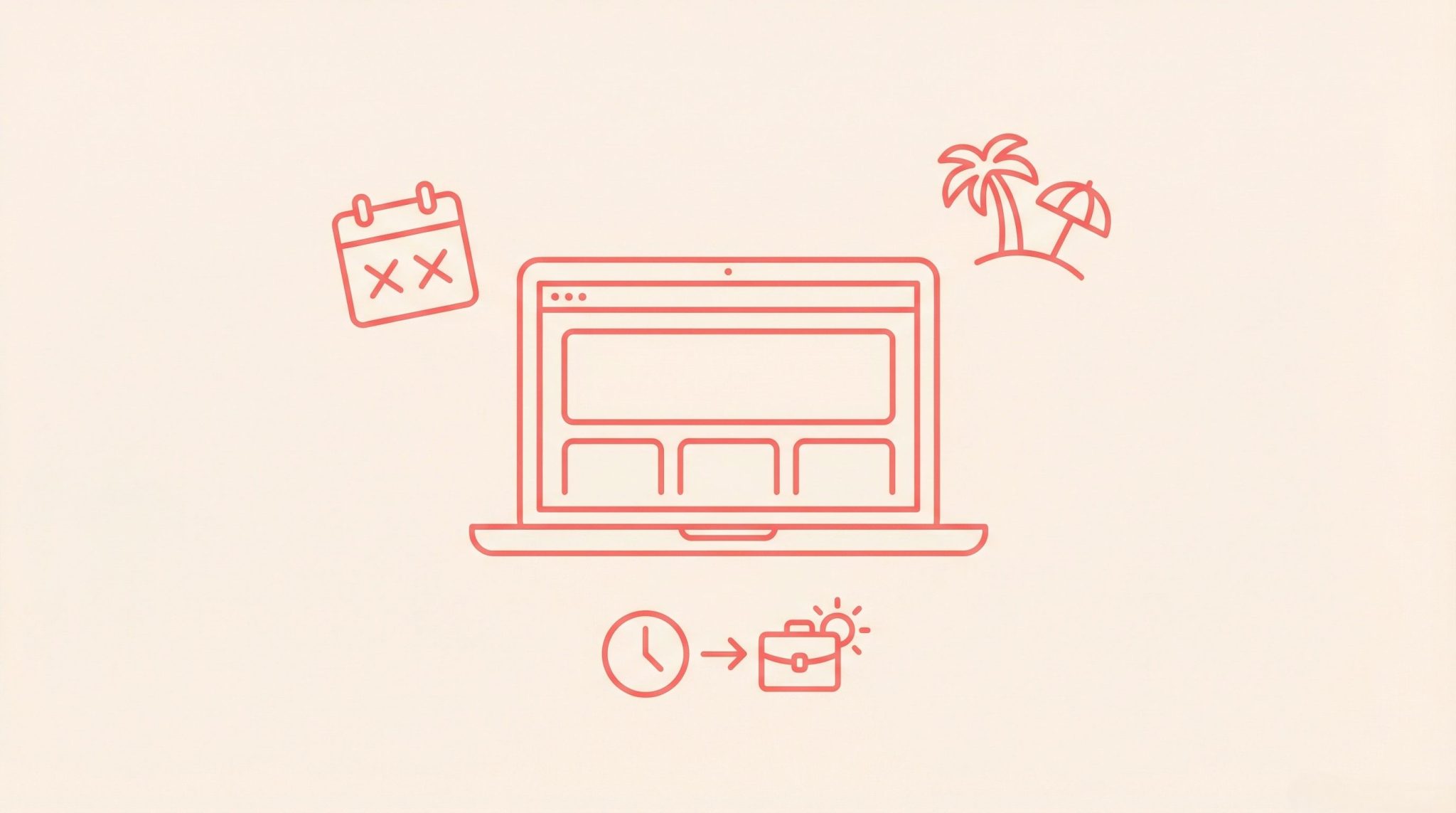Choosing the best hosting for your Australian ecommerce website directly affects your store’s speed, security, and customer experience. Poor hosting can lead to slow load times, lost sales, and trust issues—especially for online stores serving local shoppers.
This guide breaks down:
- The top hosting options for ecommerce in Australia
- Key differences between shared, VPS, cloud, and managed platforms
- Expert tips to improve site performance, uptime, and compliance
As a Sydney-based web design expert, I’ll walk you through how to choose the right solution for your business—whether you’re launching a new store or scaling an existing one.
Why Does E-commerce Hosting Matter for Australian Online Stores?
Your hosting choice directly impacts speed, security, and customer experience. This SOASTA (now Akamai) study found that 53% of mobile users will leave a page that takes more than three seconds to load. Even a 100-millisecond delay in page load can hurt conversion rates by up to 7%. For Australian stores, every moment of delay on counts–no matter how small.
Beyond speed, hosting affects uptime and scalability for high traffic periods during promotions and sales. Choosing the wrong option could cost you sales and reputation. Below, I break down what you need to know.
What Are the Unique Needs of E-commerce Hosting in Australia?
E-commerce websites have specific demands compared to regular sites. Let’s explore the key factors that matter most for online stores in Australia.
Performance & Reliability: Why Speed Wins in Australia
Speed isn’t just a luxury; it’s a necessity. A fast site (low Time to First Byte or TTFB) and high uptime (99.9% or better) will keep your customers happy and improve your SEO rankings. Google prioritises fast sites, and with Australians expecting quick load times, every millisecond counts.
Scalability: Handling Aussie Sales Spikes
Australian shopping events, such as EOFY sales, can flood your site with traffic. Your hosting must scale—either automatically or with fixed resources—to handle these spikes without crashing. Imagine losing sales when people are most ready to buy because your server couldn’t cope. Scary, right?
Security & Compliance: Protecting Customer Data
Security is non-negotiable for e-commerce. You need PCI-DSS compliance to process payments safely, plus SSL certificates, firewalls, and malware scans. In Australia, the Privacy Act 1988 (Cth) also further outlines the careful handling of customer data. Hosting locally can help meet all of these rules.
Technical Support: Getting Help When It Counts
Do you have the skills to manage a server, or do you need support? For e-commerce issues, 24/7 support with fast response times is critical. Local Australian support teams also understand your timezone and context, which can save you hours of frustration.
What Are the Best Hosting Types for Self-Hosted Ecommerce Sites?
If you’re managing your own ecommerce site with platforms like WooCommerce or Magento, traditional hosting is your path. Here’s a breakdown of the options:

Shared Hosting: Budget-Friendly but Limited
Shared hosting is the cheapest option, costing around $5–$20 AUD/month. You share a server with others, so it’s great for micro-stores with low traffic. However, the “noisy neighbour” effect—where others’ traffic slows your site—can hurt performance.
- Pros: Low cost, often managed by the host.
- Cons: Limited resources, slower speeds during peaks.
VPS Hosting: More Power and Control
A Virtual Private Server (VPS) gives you a dedicated slice of a server for $30–$150 AUD/month (unmanaged) or $60–$300+ AUD/month (managed). It’s ideal for growing SMEs needing better performance and control over software.
- Pros: Better speed, customisable.
- Cons: Requires technical know-how unless managed.
Dedicated Hosting: Top Performance at a Price
With dedicated hosting, you get an entire server for $150–$500+ AUD/month (unmanaged) or $300–$1,000+ AUD/month (managed). It’s best for large stores with high transactions, offering top security and speed—if you can manage it.
- Pros: Maximum control, high performance.
- Cons: Expensive, needs expertise.
Cloud Hosting: Flexibility for Growth
Cloud hosting (e.g. AWS, DigitalOcean) offers auto-scaling and pay-as-you-go pricing. Perfect for stores with unpredictable traffic, it reduces latency for Australian customers using local servers.
- Pros: Scales automatically, global reach.
- Cons: Complex setup, variable costs.
Should You Choose a Managed E-commerce Platform Instead?
Not keen on managing servers? Managed platforms like Shopify or BigCommerce could be your answer. Let’s explore what this means as an alternative.
What Are Managed Platforms?
These all-in-one solutions bundle hosting, software, payments, and support. Shopify or Wix Ecommerce are good examples, and are usually priced at $30–$500+ AUD/month plus transaction fees. You don’t touch the server; they handle everything.
- Pros: Easy to use, built-in scalability.
- Cons: Less control, ongoing fees.
Who Are They For?
Ideal for non-technical founders or businesses wanting to launch fast. If you value convenience over customisation, this could be your best bet. But are the fees worth it? Let’s compare.
How Do Hosting Types Compare to Managed Platforms for Australian Businesses?
Here’s the deal: choosing between traditional hosting and managed platforms depends on your needs. Below, I’ve outlined how they stack up across key factors for Aussie stores.
Real-World Performance in Australia
Speed tests from Sydney show cloud hosting often beats shared plans by 30–50% in load times. During peak periods, a managed platform or cloud setup can handle 10x traffic spikes without a hitch, while shared hosting might crash. Local server regions also cut latency for Aussie shoppers.
How to Choose the Right E-commerce Hosting in Australia?
Choosing the right hosting doesn’t have to be complicated. Follow this simple 4-step framework to match your needs with the best hosting option for your Australian e-commerce store.

Step 1: Define Your Store’s Traffic, Budget & Growth Goals
Estimate how much traffic you expect—both now and during peak Aussie sales like EOFY. Know your monthly hosting budget. Are you managing the site solo or with a tech team? This determines whether to choose a self-hosted solution or a managed platform.
Step 2: Identify E-commerce-Specific Features You Need
Identify platform needs (e.g., WooCommerce, Shopify) and local integrations like Australia Post, Afterpay, or Xero. If your industry requires Australian data storage, choose providers with local servers.
Step 3: Match Your Needs with the Right Hosting Option
For beginners or small stores, Shopify is easy and hosted for you. If you need flexibility and better performance, consider cloud or managed VPS hosting. Choose a plan that aligns with your business goals, technical skills, and platform.
Step 4: Check Support, Uptime and Provider Reviews
Look for providers with Australian reviews, 99.9% uptime guarantees, and 24/7 support (ideally based locally). Use trials or refund policies to test before committing.
Related article: Australian Ecommerce Statistics
How Can You Optimise Your E-commerce Hosting in Australia?
Choosing hosting is just the start. Here are expert tips to set up and optimise for peak performance.
Server Setup for Speed
Use the latest PHP versions and tune your database for large product lists. Set up caching with tools like Redis. Pick a server location in Sydney or Melbourne to cut latency for local shoppers.
Add a CDN for Faster Delivery
A Content Delivery Network (CDN) like Cloudflare, with Australian nodes, speeds up asset delivery. Cache static pages but exclude dynamic ones like checkout to avoid issues.
Boost Security Beyond Basics
Install a Web Application Firewall (WAF) and patch regularly. Protect against threats like SQL injection. If self-hosting, know you’re mostly responsible for PCI compliance—unlike managed platforms.
Plan Backups and Monitoring
Set automated daily backups with off-site storage. Use tools like UptimeRobot to monitor downtime. Be ready to restore fast if a promotional event crashes your site.
Pro Tip: Cut Latency for Aussie Shoppers
Always choose a hosting provider with data centres in Australia, like AWS Sydney or DigitalOcean’s local options. Pair this with a CDN for even faster load times.
Why Trust Spark Interact on E-commerce Hosting?
At Spark Interact, we’re a Sydney-based e-commerce web design team with years of experience helping Australian businesses build and optimise ecommerce stores. Our expertise spans hosting setups, platform choices, performance tuning and web maintenance.
We’re committed to trustworthy advice, backed by real client success stories (check our case studies). As an Australian business, we understand local needs—from data laws to market trends. You’re in safe hands with us.
Frequently Asked Questions (FAQs)
What’s the Most Affordable Hosting for Small Aussie E-commerce Stores?
Shared hosting starts at $5–$20 AUD/month. It’s budget-friendly and beginner-friendly, but may slow down during traffic spikes. Great for new stores—just be ready to upgrade as you grow.
Can I Upgrade Hosting or Change Platforms Without Downtime?
Yes. With planning, most providers offer smooth upgrades or migrations. Use a staging site and schedule changes during low-traffic hours. Many hosts help with the move.
Does Hosting in Australia Really Matter More Than Using a CDN?
Yes, if your audience is mainly in Australia. Local servers cut lag. A CDN helps global reach, but local hosting gives better speed for Aussie users. Using both is best.
Do Platforms Like Shopify Count as Hosting Solutions?
Not in the traditional sense. Shopify and BigCommerce include hosting as part of their service, managing servers for you. Unlike self-hosting, you can’t control the infrastructure, but you gain ease-of-use and built-in security for your store.
How Do I Evaluate the Tech Expertise of Hosting Support Teams?
Read local reviews, check for 24/7 support, and see if they understand ecommerce. Try their chat or email support before buying to test speed and helpfulness.
Conclusion: Powering Your Australian Online Store for Success
Choosing the right e-commerce hosting or platform is the foundation of your online store’s growth. Focus on performance, security, scalability, budget, and support to match your business needs. With fierce competition in Australia, the right setup ensures a smooth customer experience and more sales.
Ready to take the next step? Book a free consultation with Spark Interact to discuss your needs. And stay tuned for our next guide on mastering WooCommerce performance for even deeper insights. Let’s build your success together!





